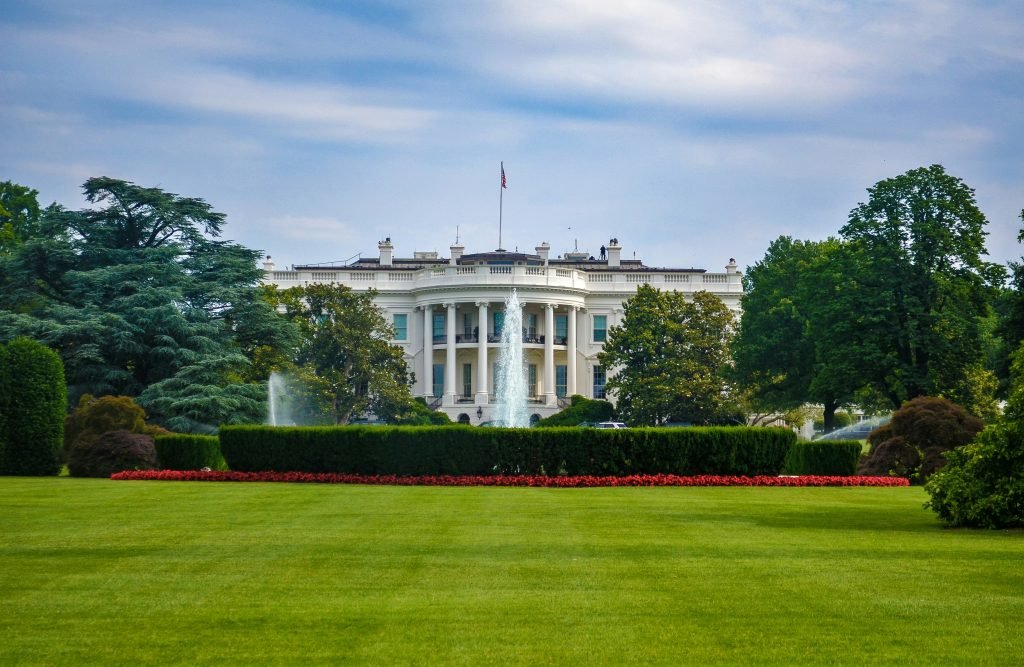
In a sweeping move that could reshape the flow of advanced computing technologies worldwide, the Trump administration has announced New AI Chip policy that plans to dismantle the Biden-era AI export control framework, signaling a fundamental shift in the U.S. approach to regulating artificial intelligence & Global Technologies.
Just days before the Biden administration’s “Framework for Artificial Intelligence Diffusion” was set to take effect on May 15, the Trump administration declared the three-tiered structure “overly complex” and “bureaucratic.” In its place, officials have promised a simpler, more commercially aligned regime aimed at safeguarding U.S. innovation while recalibrating national security priorities.
A Strategic U-Turn
At the heart of the reversal is a change in philosophy. While Biden’s framework sought to tightly control the international flow of advanced AI chips — particularly to adversaries like China — by categorizing nations into access tiers, Trump’s plan leans toward bilateral licensing agreements and diplomatic negotiations.
The previous system divided countries into:
-
Tier 1: Full access (including allies like Japan, Germany, and Taiwan),
-
Tier 2: Limited access with chip import caps,
-
Tier 3: Total exclusion (China, Russia, Iran, North Korea).
Trump officials argue the rigid structure threatened to stifle American innovation and erode the global competitiveness of U.S. tech firms. “We’re freeing American innovation and ensuring AI dominance,” said a Commerce Department spokeswoman.
Winners and Losers in a Realigned World
The decision has immediate geopolitical implications:
-
Middle East Gains: Countries like the UAE and Saudi Arabia — previously constrained by Biden-era chip restrictions — now have an opening to negotiate more favorable terms. Trump is expected to begin discussions on a formal AI chip agreement during his visit to the region from May 13–16. These countries, particularly the UAE, have been aggressive in seeking access to AI hardware as they position themselves as global tech hubs.
-
Asia-Pacific Realignment: India and Malaysia, which were previously swept into second-tier restrictions, will benefit from regulatory reprieve. For Malaysia, this boosts domestic AI infrastructure projects — such as Oracle’s major data center expansion.
-
China Still Under Pressure: Despite the rollback, Trump’s administration is not abandoning hardline stances against China. Restrictions on sales of specific chips, including Nvidia’s H20 model, remain in effect. The administration is also reportedly exploring enforcement actions against nations facilitating backdoor chip transfers to Chinese firms.
Industry Impact: Relief and Risk
Financial markets responded quickly. Nvidia shares jumped 3% on the day the news broke, reflecting investor optimism that U.S. firms may face fewer barriers to overseas sales. However, the after-hours dip — and broader market hesitation — highlights lingering uncertainty. The policy transition could take the form of new rules or an executive order, but details remain sparse.
Chipmakers like Nvidia have long criticized U.S. export controls, warning they risk ceding market share to global competitors. CEO Jensen Huang has argued that China could become a $50 billion AI chip market in the coming years, and cutting it off completely would only hurt American innovation and market dominance.
Still, not all in the tech sector share that view. Companies like Anthropic and national security advocates have voiced concerns that loosening controls could enable intellectual property theft and bolster adversarial AI capabilities.
A Diplomatic Tightrope
Replacing the three-tiered framework with a global licensing model may seem simpler on paper — but in practice, it could be even more complex. Forging intergovernmental agreements on a country-by-country basis means the U.S. will need to navigate an increasingly multipolar world where countries like China, Russia, and even traditional allies are developing alternative chip alliances and infrastructure.
The Biden administration had spent four years carefully calibrating the now-defunct rules to manage precisely these scenarios. Critics of the Trump reversal warn that eliminating such structure could open backdoors to high-risk transfers, undoing the strategic containment effort aimed at AI militarization by adversarial regimes.
The Global AI Race Accelerates
The timing of the reversal is no coincidence. The U.S.–China AI chip race is intensifying. Notably, Chinese chip designer Cambricon Technologies reported its first-ever profit, driven by rising domestic AI demand and government support — a signal that China is not waiting on U.S. policy to catch up.
The Trump administration’s pivot is a calculated risk: prioritize immediate economic gains and alliances over multilateral technology policing. Whether that decision boosts U.S. chipmakers or enables rival powers will be determined by how effectively Washington executes its new licensing diplomacy.
Conclusion: The Stakes Are Global
This is more than a regulatory change — it’s a realignment of how America will compete, cooperate, and control in the AI age. The Trump administration’s rollback of the Biden framework is not just about easing business burdens — it’s about reshaping who gets to access the tools of 21st-century intelligence and who gets left behind.
As new agreements unfold and the global chip map redraws itself, the coming months will test whether the U.S. can retain technological leadership while walking the fine line between security and innovation.
Interested in AI News and latest innovations Read more here

